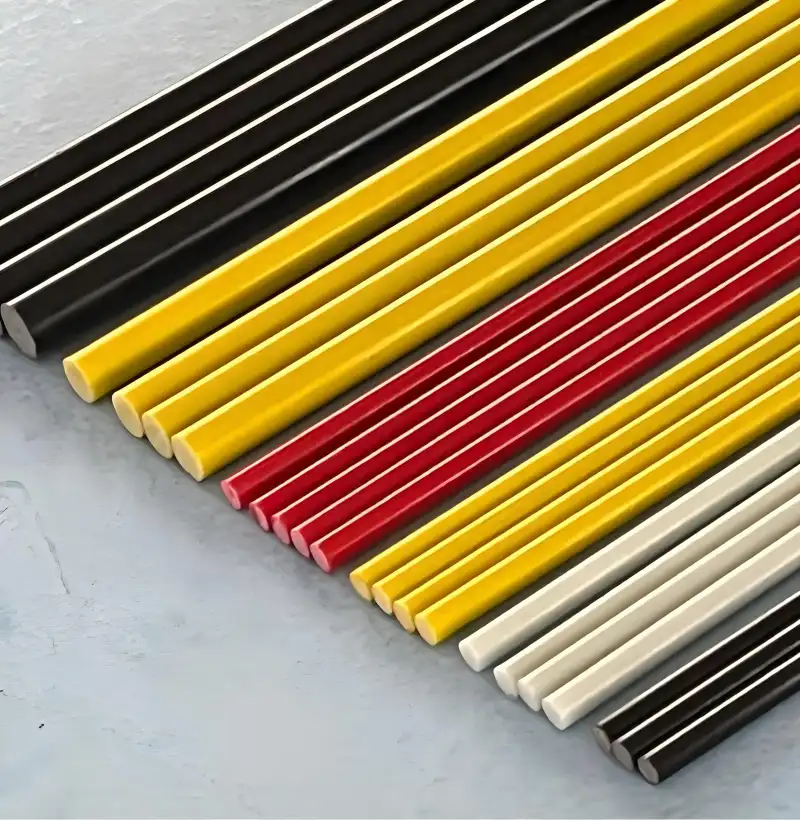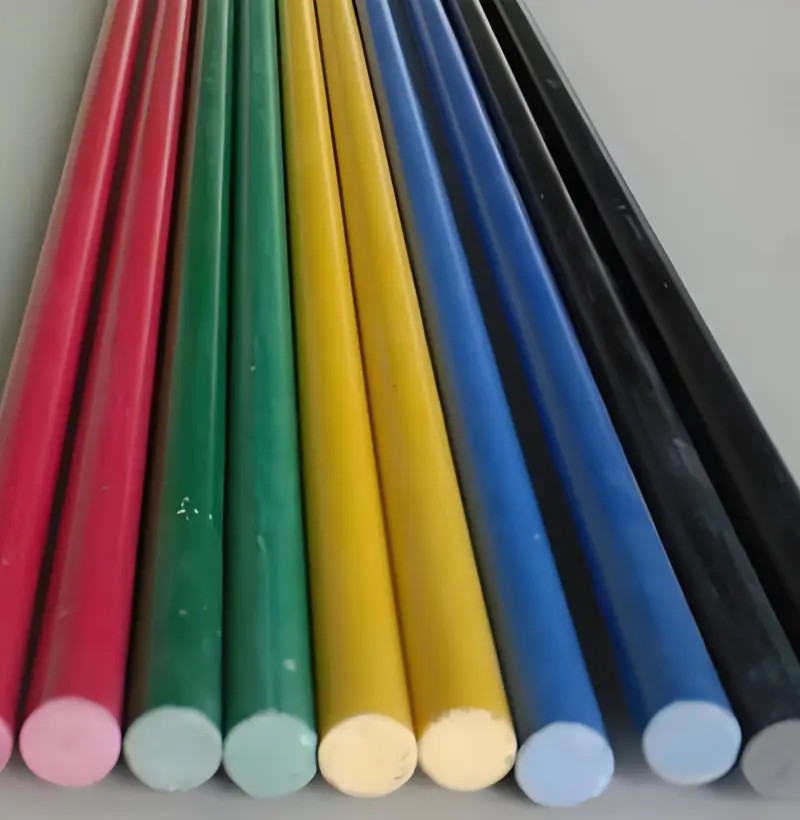1. Meet Your FRP Rod: The Unsung Hero of Corrosion Resistance
Let’s be honest—FRP rods don’t get the glamour of beams or the swagger of tubes. But ask any engineer who’s battled saltwater or chemical spills, and they’ll tell you: these slender warriors are game-changers. Whether you’re anchoring a seaside boardwalk or reinforcing a chemical tank, FRP rods laugh in the face of rust.
Fun Fact: In the 2022 Baltic Sea Offshore Project, Ø20 mm FRP rods endured 10x less corrosion than stainless steel after 18 months. Take that, Mother Nature!

Installation and Usage Guide for FRP Rod
2. Pre-Installation: The “Rod Recon” Checklist
Rule #1: Treat rods like fine china—strong but delicate.
Visual Inspection:
- Hunt for “rogue stripes”: Wavy fiber patterns are normal, but axial cracks? Red flag! Reject any rod with cracks deeper than 0.5 mm (use a UV flashlight—trust me, it’s like CSI for composites).
- Diameter Check: Grab calipers! Tolerance: ±1% for Ø ≤25 mm; ±0.5% for Ø >25 mm.
Storage Secrets:
- Store vertically in racks (no leaning—they’ll warp like overcooked spaghetti).
- Avoid UV exposure: Cover with black tarps unless you want brittle rods that snap during installation. Learned this the hard way in Death Valley, 2019.
3. Pre-Job Prep: Tools, Teams, and Tales
Crew Requirements:
- Assign a Rod Ranger: Someone with patience sharper than a diamond blade. Bonus if they can thread a rod through a needle (metaphorically).
- PPE Must-Haves: Cut-resistant gloves (fiberglass splinters are not a souvenir), full-face shields for cutting.
Toolbox Essentials:
- Cutting: Carbide-tipped rotary saws (for clean cuts)
- Threading: Custom dies for FRP (steel dies = shredded fibers)
- Adhesive: Two-part methacrylate glue (e.g., Plexus MA310)—sticks faster than a bad reputation
Site Setup:
- Clear a “rod runway”: 1.5x rod length on all sides.
- Mark insertion angles with neon spray paint. Pro tip: Use a smartphone inclinometer app—it’s 2024, folks!
4. Installation: A Symphony of Precision (and Occasional Swearing)
Step-1: Cutting – No Room for “Oops”
Dos:
- Secure rods in V-blocks to prevent rolling.
- Cut at 90° ±0.5°—a skewed cut here can haunt you during alignment.
Don’ts:
- Never freehand cut. Remember Dave’s “I’ve done this a million times” incident? Yeah, his rods now decorate the scrap yard.
Step-2: Threading – Where Art Meets Engineering
- Lubricate dies with paraffin wax (not oil—it weakens adhesion).
- Rotate rod counterclockwise while threading to prevent fiber fraying.
- Torque Limits:
Rod Diameter (mm) Max Torque (N·m) 10 8–10 20 15–18 30 25–30
Step-3: Embedding – The “No Second Chances” Moment
Epoxy Injection:
- Mix resin like you’re crafting a latte—slow swirls, no bubbles.
- Inject into drilled holes until epoxy giggles out (technical term: positive expulsion).
Curing:
- Ideal temp: 20–25°C. Cold weather hack? Throw a heated blanket around the joint. Works better than dad jokes at site meetings.

FRP Rod
5. Oops-Proofing: Wisdom from the School of Hard Knocks
Thermal Expansion Blues:
FRP rods grow 14×10⁻⁶/°C. Translation: A 10°C rise makes a 6m rod stretch 0.84 mm. Leave gaps unless you want a tensioned rod concert!
Galvanic Drama:
- Isolate FRP from metals using PVC sleeves.
- True story: A bridge in Quebec failed because a rookie used aluminum clamps. Don’t be that rookie.
UV Armor:
Spray a clear UV-resistant coating (e.g., 3M Scotchkote 323) on exposed rods. Reapply every 3 years—think of it as sunscreen for your infrastructure.
6. Quality Control: Channel Your Inner Detective
The Tap Test:
Gently tap embedded rods with a nylon hammer. A hollow sound = bad adhesion. A solid “thunk” = success (and maybe a silent victory dance).
Load Testing:
- Apply 120% design load for 1 hour. Max elongation: ≤0.2% (ASTM D7205).
- If it holds, celebrate with coffee. If not… well, there’s always epoxy.
7. Maintenance: Keep the Love Alive
Monthly TLC:
- Wipe rods with a damp cloth (no abrasives!).
- Check for “whiskering”—loose fibers that signal wear. Trim them with surgical precision.
Annual Checkup:
- Retorque 5% of threaded connections.
- Re-apply thread sealant (we’re partial to Loctite 577).
8. When Disaster Strikes: FRP 911
Emergency Kit:
- Small Breaks: Wrap with carbon fiber tape + quick-cure resin.
- Major Snaps: Replace the rod—no heroics. Seriously, duct tape won’t cut it here.
Panic Button:
📞 Call our FRP Hotline: +86 318 5261 909 (24/7, because rods don’t care about your sleep schedule).
9. Parting Wisdom from a Seasoned Rod Wrangler
FRP rods are like cats—stubborn but brilliant if you respect their quirks. Stay patient, double-check every torque value, and for Pete’s sake, label your epoxy mix ratios.
Now go anchor something awesome. And if you mess up? Welcome to the club—we’ve all been there.
Written by: Sam Gallagher
Lead FRP Engineer | 12 years of turning rod nightmares into success stories
Version: 2024.2 | Standards: ASTM D3916, ISO 10406, EN 15386
“Measure twice, curse once.” – Anonymous Field Engineer 🛠️💥
 Hengshui Hongwo Technology Co., Ltd.
Hengshui Hongwo Technology Co., Ltd.
WeChat
Scan the QR Code with WeChat